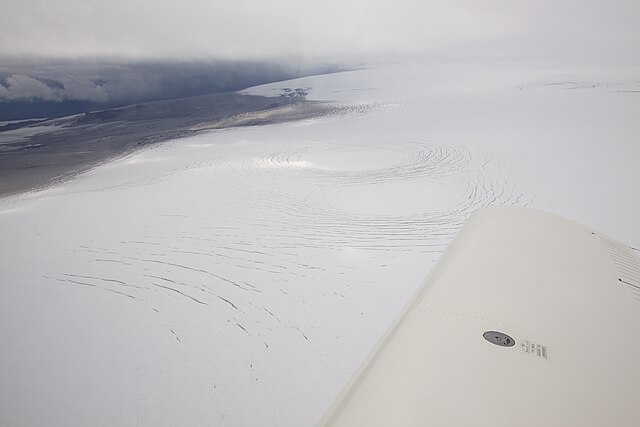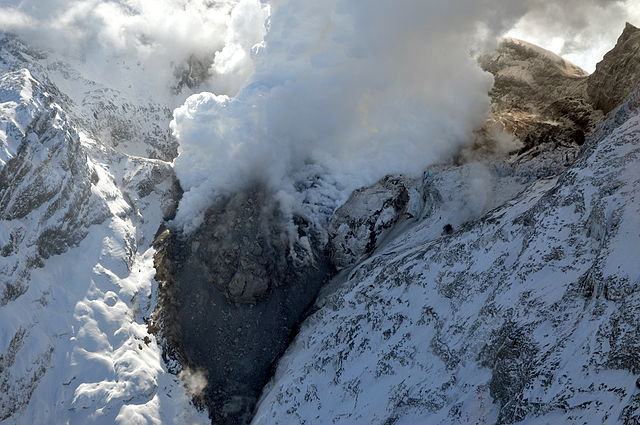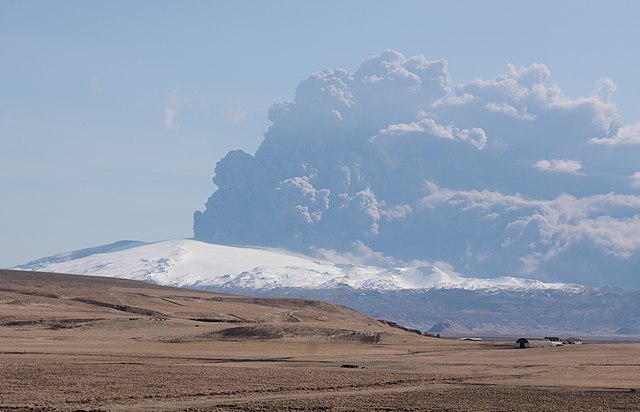A subglacial volcano, also known as a glaciovolcano, is a volcanic form produced by subglacial eruptions or eruptions beneath the surface of a glacier or ice sheet which is then melted into a lake by the rising lava. Today they are most common in Iceland and Antarctica; older formations of this type are found also in British Columbia and Yukon Territory, Canada.
Ice covered Katla volcano, Iceland, in 2011, with hydrothermally or eruption caused ice cauldrons. The volcanic ash is from the 2010 eruptions at nearby Eyjafjallajökull volcano.
Small subglacial eruption at Mount Redoubt, Alaska
Explosive subglacial eruption at Eyjafjallajökull, Iceland, in 2010
45.000 m3/sec jökulhlaup on Skeiðarársandur, Iceland, in 1996 in connection with a eruption in Grímsvötn
Subglacial eruptions, those of ice-covered volcanoes, result in the interaction of magma with ice and snow, leading to meltwater formation, jökulhlaups, and lahars. Flooding associated with meltwater is a significant hazard in some volcanic areas, including Iceland, Alaska, and parts of the Andes. Jökulhlaups have been identified as the most frequently occurring volcanic hazard in Iceland, with major events where peak discharges of meltwater can reach 10,000 – 100,000 m3/s occurring when there are large eruptions beneath glaciers.
It is important to explore volcano-ice interactions to improve the effectiveness of monitoring these events and to undertake hazard assessments. This is particularly relevant given that subglacial eruptions have demonstrated their ability to cause widespread impact, with the ash cloud associated with Iceland's Eyjafjallajökull eruption in 2010 resulting in significant impacts to aviation across Europe.
Explosive subglacial eruption of Mount Redoubt, Alaska
Subglacial lava dome extrusion at Mount Redoubt, Alaska
Explosive subglacial eruption at Eyjafjallajökull, Iceland, in 2010







